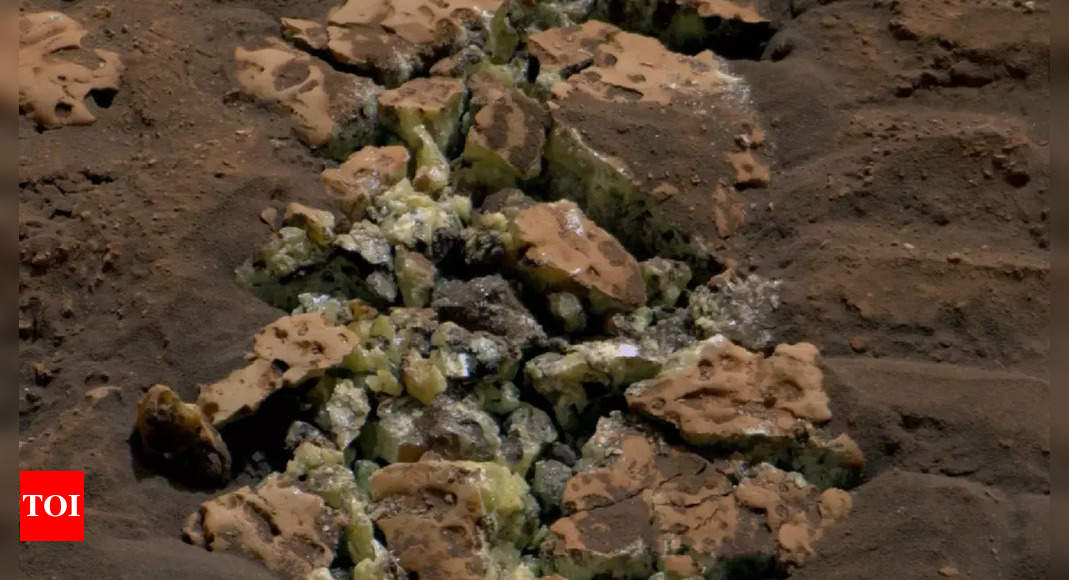
Previously, Curiosity had detected sulphur on Mars, but only mixed with other minerals like magnesium and calcium.The discovery of pure sulphur, which forms under specific conditions, had not been observed in the rover’s current location. According to Nasa, the sulphur seems to be present in many rocks in the region.
“Finding a field of stones made of pure sulphur is like finding an oasis in the desert,” said Ashwin Vasavada, Curiosity’s project scientist at Nasa’s Jet Propulsion Laboratory in California. “It shouldn’t be there, so now we have to explain it.”
The rover’s images show yellow sulphur crystals within the crushed pockets of the rock. These crystals were too small and brittle for Curiosity to sample with a drill. Therefore, the rover moved to a larger rock, nicknamed Mammoth Lakes, and used its drill to collect a sample for further analysis.
Curiosity made this discovery on May 30 while exploring Gediz Vallis, a channel on Mount Sharp in the Gale Crater. The rover has been examining the channel for signs of ancient microbial life.
Mount Sharp is believed to have been wetter billions of years ago than it is today. The Gediz Vallis channel, potentially shaped by strong winds or liquid water flows as Mars dried out, contains debris that hints at this wetter past. Chemical reactions caused by water have left pale rings or halos near the edges of rocks, suggesting that these rocks absorbed minerals deposited in the area.
Scientists are still investigating the formation of the pure sulphur and its connection to other sulphur-based minerals found in the region.
“Discovering strange and unexpected things is what makes planetary exploration so exciting,” Vasavada said.
The discovery was made by chance when the rover drove over a rock pile and cracked one open. This finding marks a unique event in the past 30 years of planetary exploration.
Nasa’s Curiosity rover shared the discovery online and posted on X: “Cronch I ran over a rock and found crystals inside! It’s pure sulphur. (And no, it doesn’t smell.) Elemental sulphur is something we’ve never seen before on Mars. We don’t know much about these yellow crystals yet, but my team is excited to investigate.”
The rover clarified that elemental sulphur is odorless, unlike hydrogen sulphide, which smells like rotten eggs. It forms under specific conditions that scientists had not previously associated with this location.
Sulphur is a key element for life, alongside carbon, hydrogen, nitrogen, oxygen, and phosphorus, which together constitute 98% of living matter on Earth. This has led scientists to reconsider Mars’ potential for life and its geological history.
Curiosity’s unexpected find in the Gediz Vallis channel, which may have been created 3 billion years ago by flowing water, has raised new questions about Mars. Vasavada acknowledged the role of luck in this discovery, highlighting the significance of this unexpected find in expanding their understanding of the Red Planet.









